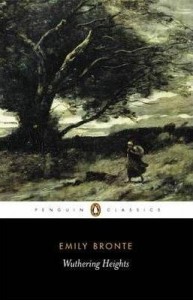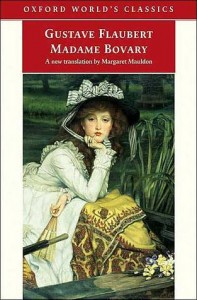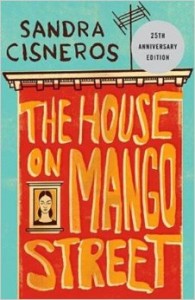We’ve explored the “starring” role of window coverings in the cinema, but let’s not forget literature! Famous windows in literature can be found, including window and curtain imagery, blinds, drapes, and shades, from classic tales to contemporary masterpieces. They are powerful symbols, meaning different things in different stories. If a character is staring out a window, for example, he or she may have a narrow view of the world. The glass might represent the fact that the character feels trapped or cut off from others. In other instances, a window can symbolize dreams for a different kind of life, or an opportunity for escape. Here are a few of our favorite examples:
 Wuthering Heights, by Emily Bronte
Wuthering Heights, by Emily Bronte
In this classic story about love and jealousy, characters are often blocked by locked windows, symbolizing the damaging effects of revenge; at other times, they’re left open, illustrating a character’s vulnerability. For instance, in one scene Heathcliff opens a window to let Catherine’s ghost in. In another, Nelly leaves the window open to let Heathcliff enter Catherine’s room. In both scenes, characters are going somewhere they shouldn’t, so the window – rather than a door – is used.
 Madame Bovary, by Gustave Flaubert
Madame Bovary, by Gustave FlaubertEmma Bovary is a woman who dreams of a different life and reaches for it by living beyond her means and having affairs. The story is most famous, however, for Flaubert’s use of patterns and symbols – including windows. Throughout the book we see Emma looking out windows, or glimpse her through them as she waves goodbye to her lovers. For Emma, windows represent the possibility of an escape she’ll never obtain.
 The House on Mango Street, by Sandra Cisneros
The House on Mango Street, by Sandra CisnerosThis acclaimed novel tells the coming-of-age story of a young Latina girl named Esperanza. Throughout the book, window imagery is used as a symbol of regret and entrapment. For example, we learn that Esperanza’s long-dead great-grandmother spent her life sitting sadly by her window, stuck in an unhappy marriage. Four women in Esperanza’s neighborhood are trapped in their apartments and they also sit by their windows, looking down onto the street. When Esperanza sees these women, she vows never to become one of them.
 The Virgin Suicides, by Jeffrey Eugenides
The Virgin Suicides, by Jeffrey EugenidesA beautiful book concerned with secrets and memory, Eugenides uses windows to symbolize his character’s limits. Over the course of a single year, the five Lisbon sisters commit suicide, one by one, while a group of neighborhood boys watch from afar and try to piece together the mystery of the girls’ lives. The boys’ inability to enter the Lisbon house through windows or doors reflects their inability to understand the girls. Likewise, sister Lux’s appearances in windows, glimpsed by the boys below, symbolize her role as an intermediary between her sisters and the outside world.
No matter what the story is about, when an author takes the time to mention a window or curtains, it’s safe to assume there’s something deeper at work. Happy reading! And for more on window coverings in books, read our blog post on Curtains and Home in Children’s Literature, too.